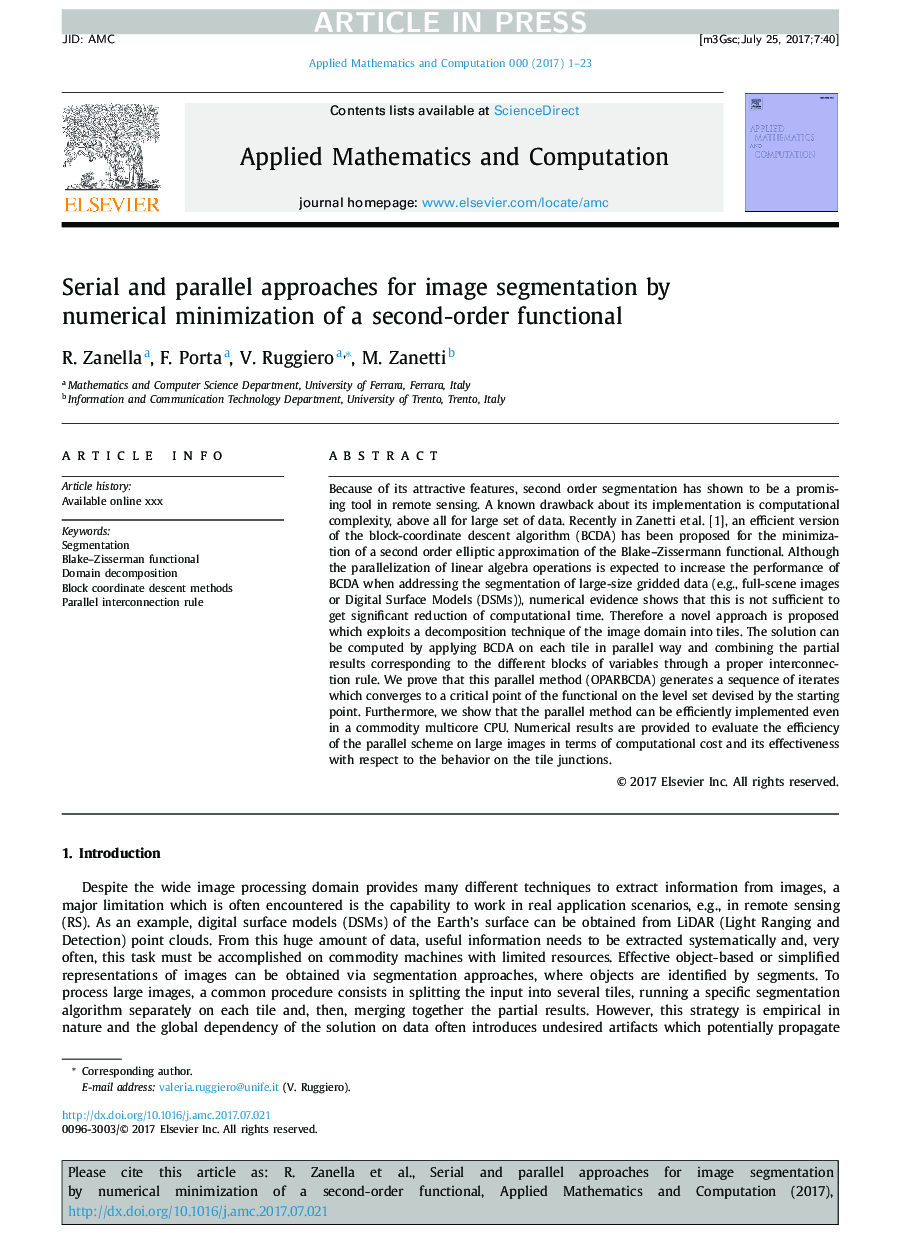| Article ID | Journal | Published Year | Pages | File Type |
|---|---|---|---|---|
| 8901588 | Applied Mathematics and Computation | 2018 | 23 Pages |
Abstract
Because of its attractive features, second order segmentation has shown to be a promising tool in remote sensing. A known drawback about its implementation is computational complexity, above all for large set of data. Recently in Zanetti etâ¯al. [1], an efficient version of the block-coordinate descent algorithm (BCDA) has been proposed for the minimization of a second order elliptic approximation of the Blake-Zissermann functional. Although the parallelization of linear algebra operations is expected to increase the performance of BCDA when addressing the segmentation of large-size gridded data (e.g., full-scene images or Digital Surface Models (DSMs)), numerical evidence shows that this is not sufficient to get significant reduction of computational time. Therefore a novel approach is proposed which exploits a decomposition technique of the image domain into tiles. The solution can be computed by applying BCDA on each tile in parallel way and combining the partial results corresponding to the different blocks of variables through a proper interconnection rule. We prove that this parallel method (OPARBCDA) generates a sequence of iterates which converges to a critical point of the functional on the level set devised by the starting point. Furthermore, we show that the parallel method can be efficiently implemented even in a commodity multicore CPU. Numerical results are provided to evaluate the efficiency of the parallel scheme on large images in terms of computational cost and its effectiveness with respect to the behavior on the tile junctions.
Keywords
Related Topics
Physical Sciences and Engineering
Mathematics
Applied Mathematics
Authors
R. Zanella, F. Porta, V. Ruggiero, M. Zanetti,
